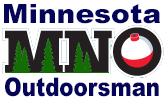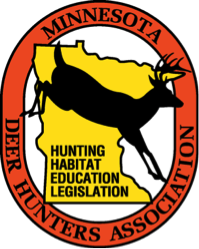This was one of the questions on the Whitetail Hunters Survey held earlier this year.
82. What time of day is your favorite hunting time?
morning 59.14% 152
mid-day 3.50% 9
evening 37.35% 96
MORNING is the most difficult time of day to hunt, because - when a hunter goes to their stand site in the dark, they can't see the deer that might be near them (bedded, feeding or traveling) as they walk in - in the dark. Thus, they often spook deer as they go to their stand, and those spooked deer leave behind a lot of metatarsal and interdigital scent, that tells other deer that may come through the area - that something is wrong there (or there was earlier). And it MAY take as long as two hours for that scent to be dispersed or dissapated. The other deer then either become alarmed and leave the area, or they avoid the area altogether.
If you go to your stand in the morning I suggest you get there at least an hour, two hours is better, before you plan to hunt so the area has a chance to get back to normal.
Here is an excerpt from my Complete Whitetail Addict's Manual that may help you.
Nighttime Deer Activity
Hunters rarely think about nighttime deer movement, because they can’t hunt at night. But, an understanding of where and how deer move at night is essential if you want t be a successful hunter. During the fall of 1999 I decided not to hunt the opening of the gun season. Instead, I parked my truck on a high hill, where I could watch the hunters as they drove to their hunting spots, so I could learn how the deer reacted to all those vehicles driving down the county roads and into the woods and fields, and all those hunters walking through the woods during the early morning hours.
I couldn’t believe the number of vehicles I saw driving into and through the fields and woods where I knew the deer would be feeding at night. As I drove down the county roads to the hill, I saw five vehicles parked on access ramps to logging roads that led into wooded areas. Didn’t the hunters know that the deer regularly used the logging roads, and often crossed the county road right where they had parked their vehicles? Didn’t they know that any deer that saw the vehicles would probably not use the trail, and probably would not have returned to their normal bedding area because the vehicles were there?
I watched one truck go across a half-mile wide cornfield, and then stop within fifty yards of the woods. Didn’t the hunters realize that the deer were feeding in the field when they drove across it? Didn’t they realize that every deer in the field headed for the woods the minute they saw the headlights or heard the truck? Didn’t they realize every deer in the woods also heard the truck, and that none of them would come out to after sunrise when the saw the truck in the field?
I watched as another truck was parked on a county road within twenty yards of a hay field where I saw deer feeding from September through January. Didn’t the hunters know that the deer regularly stopped there for a last minute bite of alfalfa before they went back to their bedding areas in the morning? No wonder those hunters saw so few deer, and rarely saw a buck, nonetheless a big buck; they let every deer in their hunting area know it was the opening of gun season, and that the woods was being invaded by humans carrying guns.
The only reason I can think of why hunters cross open fields to get to their deer stands is that they don’t understand that the deer eat in those fields at night. The only reason I can think of why hunters park their vehicles where they do is because they don’t know that deer use access ramps as crossing areas, and logging roads as travel lanes as they move to and from their wooded bedding areas at dawn and dusk. Don’t cross an open field as you go to a stand in the morning; know where the deer feeding areas, crossings, and travel routes are; and don’t park where the deer can see or hear your vehicle when they use those areas.
Many hunters realize that they see deer most often at dawn and dusk, but some of them fail to understand that the deer rest in wooded areas during most of the day, get up around sunset, and move out of the woods and into fields after dark. They also don’t understand that, when the weather is nice, the deer often spend the night eating and resting in or near fields, and that around sunrise, they leave the fields to go back to their wooded bedding areas. During the night I regularly check the feeding areas where I do research and hunt. While I often see deer feeding after sunset and before sunrise, I also see them bedded in or near the fields from 10:00 - 12:00 PM and from 2:00 - 4:00 AM. Several different studies on daily deer activity show that during the fall deer are most active at night around dawn and dusk, and from 12:00 - 2:00 AM. This means they are not moving much between 10:00 and 12:00 PM, and between 2:00 and 4:00 AM.
So what do deer do at night? When deer leave their bedding areas at sunset they often head for the nearest field, stopping to feed on grass, sedges, forbs, fruits and twigs along the way. Once they get to the field they stock up on corn, soybeans, alfalfa or where what ever else is available. In areas where there are several types of forage the deer may travel to each of them during the first few hours of darkness. The deer don’t actually digest whet they eat while feeding because they are ruminants, they store the food until later. Once they are full the deer usually lay down to regurgitate their cud and chew it to make it digestible. From the daily activity studies I mentioned earlier it appears that deer feed for 4-6 hours in the evening, lay down to rest and chew their cud for a couple of hours, then get up and feed for another couple of hours after midnight, rest again for a couple of hours, and then get up to feed again for 2-4 hours before going back to their bedding areas. It is thought that deer rarely sleep longer than two hours before standing up to at least stretch. During the winter deer may sleep longer than that. During the rut bucks may bed very little.
While I was watching the hunters during the first day of the gun season one year I noticed three does, each with a fawn, feeding in the cornfields within a half-mile of my truck. Because these deer were not harassed by hunters they continued to feed until about 8:30. Even with several gunshots around them they continued to feed, and appeared not to be alarmed by the dun shots in the woods, or the fact the hunting season was in progress. Shortly after 8:30 the does and fawns moved north and crossed a county road in open country. Then they went north until they got lose to a group of trees planted along the neighbors driveway as a windbreak/snow fence, followed the trees east and crossed a highway, and eventually moved back into the wooded area where they bedded.
I suspect the deer were unaware of the hunters stationed in those woods, unless they came across their scent, and therefore they may have continued to move and feed as they normally would. They probably didn’t stop moving and feeding until they got back to their bedding areas, which may have taken an hour or more. Movement by deer such as these, which were unaware of the hunters, explains why hunters often see deer moving in wooded areas late in the morning even during the hunting season. Hunters who know that this activity may occur can take advantage of it by staying in the woods most of the day. They may even see a buck following a doe late in the morning during the rut, especially if the does have been feeding in fields away from their bedding areas.
God bless,
T.R.




